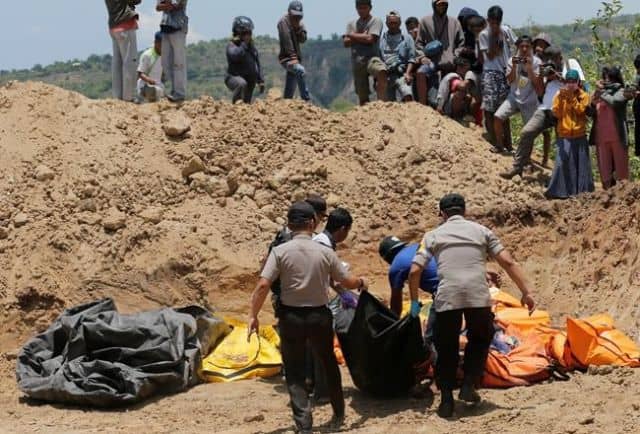Helicopters are dropping disinfectant on neighbourhoods in the earthquake- and tsunami-stricken city of Palu to reduce disease risks from the thousands of victims believed buried in obliterated communities, Indonesia’s disaster agency said Thursday.
The agency said that 430 hectares of land and nearly 3,500 homes succumbed to liquefaction in central Sulawesi when the Sept. 28 earthquake turned soft soil to mud.
Spokesman Sutopo Purwo Nugroho said in a statement the disinfectant is necessary for three devastated neighbourhoods because of the large number of victims not recovered by the search and rescue effort that ended on Oct. 12.
“Bombing and spraying of disinfectants is an effort to anticipate the spread of diseases through vectors such as flies, cockroaches, or mice,” he said.
Some ground spraying was also carried out but much of the land is too unstable to do that comprehensively.
The magnitude 7.4 quake and 11 metre high tsunami waves, which devastated miles of coastline, killed 2,103 people. Disaster officials say another 5,000 people from neighbourhoods swallowed by liquefaction remain unaccounted for.
Officials say the destroyed Palu neighbourhoods of Balaroa and Petobo, and Jono Oge in neighbouring Sigi district, cannot be redeveloped. Balaroa and Petobo will be turned into green spaces with monuments to those who perished.
Ahmad Yurianto, head of the Ministry of Health’s crisis centre, said groundwater needs to be checked regularly for contamination and drainage established to collect rainwater before it enters the city’s river.
The Indonesian government is considering a 6 trillion rupiah ($394 million plan) to build “New Palu City” and the World Bank has said it can provide the country up to $1 billion in loans for reconstruction and improving disaster preparedness.
“It is impossible to rebuild homes in the original places,” public works and housing minister Basoeki Hadimoeljono told reporters earlier this week.

